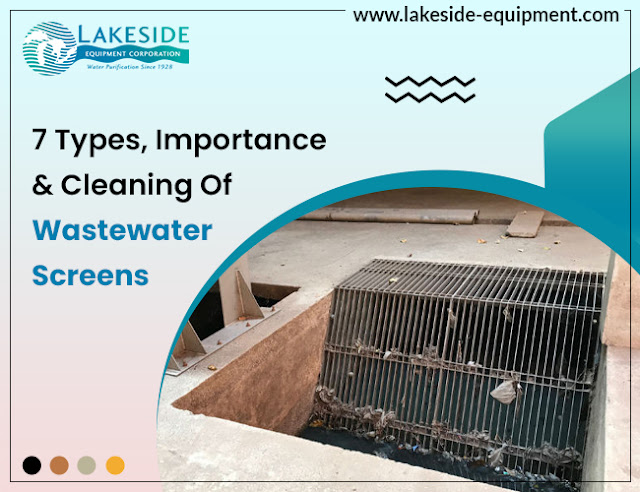Wastewater screening is a very essential procedure of the entire wastewater treatment process. There are different types of screens that are installed in any plant along with other components such as wastewater screw pumps and wastewater clarifiers. All of these have different functions and uses. To put it in perspective, a screen is a device that has several openings in it. It is used to remove big suspended or floating matter from the sewage water. Any treatment unit would be incomplete without these screens because they prevent any potential damage that might occur to the equipment if the wastewater goes in and out without proper screening.
Let us have a look at a few most commonly used wastewater screens in any wastewater biological treatment plant:
Coarse Screens
These are also known by the name of racks. These are usually bar screens that have vertical or inclined bars. These are spaced at equal intervals across the entire construction of the screen. The whole setup is positioned at uniform intervals across the entire channel through which the wastewater/sewage water flows. These screens have the largest openings which can range anywhere between 75 mm to 150 mm. These are usually installed ahead of pumps. The screens that are ahead of the sedimentation tanks may have smaller openings of around 50 mm.
Medium Screens
Medium screens have several applications and they can be identified by their clear openings which may range from 20 mm to 50 mm. The bars are usually 10 mm thick on the upside stream. They tend to gradually taper to the downstream side. The bars that are used here are rectangular and are usually about 10 x 50 mm. These are placed with larger dimensions usually parallel to the flow of the wastewater.
Fine Screens
Fine screens are characterized by very fine openings which are less than 20 mm. They appear to be like woven wire cloth. The bars are very closely spaced and they require mechanical cleaning at times. Fine screens are less suitable when it comes to the treatment of sewage water because they can result in clogging and blocking. Yet, it all depends on the applications and processes that are prevalent in any wastewater biological treatment plant.
What Are Mechanically Cleaned Wastewater Screens?
These screens are designed to reduce the various maintenance and operating problems in any
wastewater treatment plant. They can increase the efficiency of the screening processes significantly. Mechanically cleaned
wastewater screens can be classified into 4 primary categories and they are:
This is a type of screen that uses an automatic chain for the cleaning process. These are classified as front and back chain-driven screens. The difference is primarily based on how the screen is raked.
Climber Screen / Reciprocating Rake
In these types of screens, the rake moves to their base. It then engages the bars and then pulls the screen to the top where they are removed.
Catenory Screen
The rake in these screens is held against the rack. These are typically front cleaned and are also front-driven with the help of a chain.
Continuous Belt Screen
As the name suggests, this is a self-cleaning continuous screen. It is able to remove fine and coarse solids from the wastewater stream.
Wastewater screening, as pointed out earlier is a very crucial process. There are several components and they perform numerous distinct functions. The understanding of these procedures helps you make the correct choice.




Comments
Post a Comment